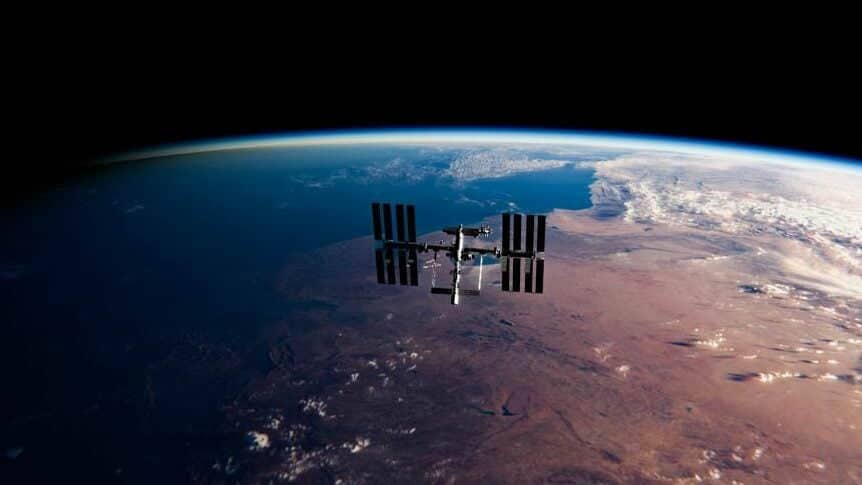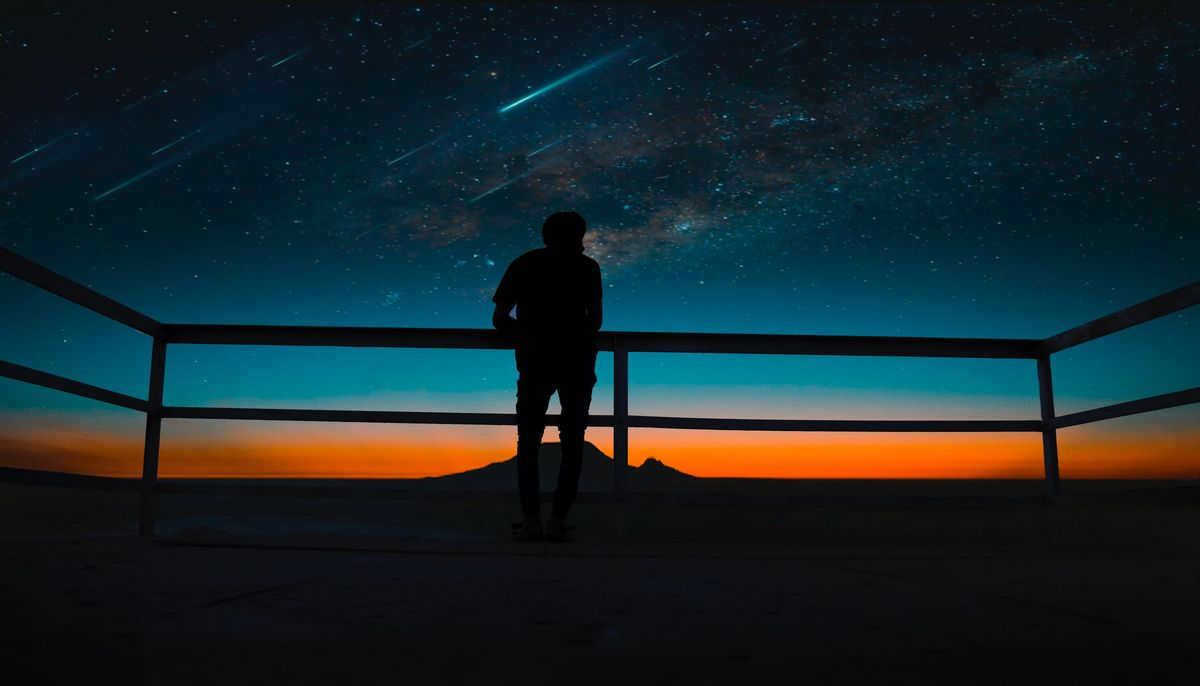
In the popular “Space” subreddit, there is a recurring question: “Why is it that stars are not visible in photographs?” This question often arises in the context of photos taken during the Apollo moon landings, from Earth satellites, or even of celestial bodies like Jupiter or the moon. Lately, there has been a surge of Falcon Heavy Starman photos circulating on the subreddit.
I have always told myself that I should write a layman’s explanation for this phenomenon, but I never found the time. However, one comment asking the same question for the millionth time finally pushed me to do it. Now, whenever someone asks about it, I can simply direct them to this link.
So, without further ado, here is an explanation of why many space photos do not capture stars, from the perspective of the photographer.
Camera fundamentals: understanding cameras and exposure values
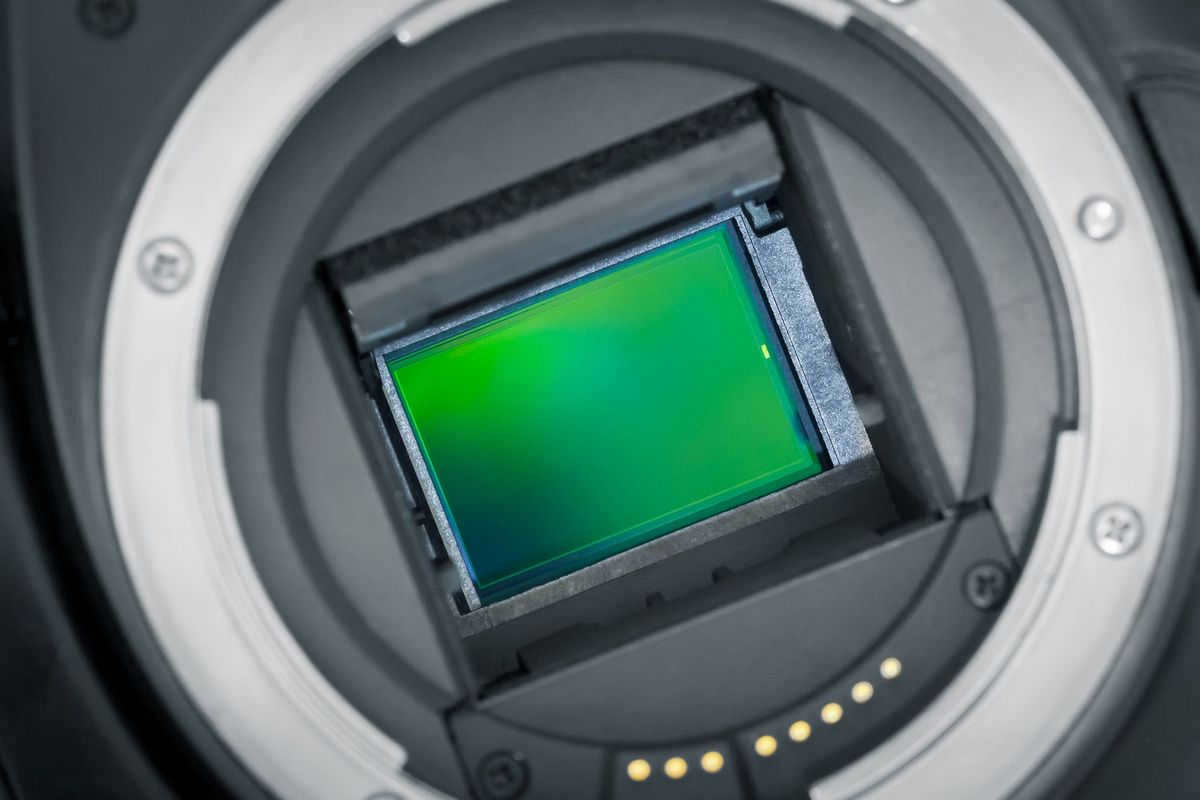
When using a camera, light passes through a lens and onto a sensor, or in older times, onto film. The sensor contains numerous small photocells that gather light particles, also known as photons. To simplify, each photocell corresponds to a pixel in the eventual image, and the brightness of that pixel is determined by the quantity of photons collected. In the resulting photograph, the darker areas represent the locations where fewer photons interacted with the sensor, while the lighter areas correspond to the places where more photons were collected. You can envision these photocells as buckets gathering photons, with the bucket that collects more photons displaying a lighter shade in the final image.

Doubling the shutter opening time changes it from 1/500 to 1/250 of a second. Another doubling results in a shutter speed of 1/125 of a second. This is equivalent to squaring the exponent. An exposure of 1/125 is two steps higher than 1/500, but it gathers four times as much light. Another doubling, leading to an exposure of 1/60 (approximately), corresponds to three steps higher but eight times as much light. It turns out that the right photo, compared to the left photo, receives an increase in light hitting equal to four exposure steps – in other words, the right photo receives 16 times more light than the left.
Aside from the shutter speed, there are two other methods to adjust the amount of light hitting the camera’s photo sensor – adjusting the lens aperture or ISO. The aperture refers to the size of the opening through which light passes.

Please disregard the figures, simply observe that the aperture, when larger, allows more light to pass through. ISO gauges the camera’s light sensitivity and functions similarly to exposure numbers – ISO 200 is twice as sensitive as ISO 100, and ISO 400 is twice as sensitive as ISO 200.
Dynamic Range
In the image illustrating various shutter speeds, the rightmost photo reveals that the bright areas, such as the sky and clouds, lack discernible detail and appear as a white blur. The camera’s sensors have a limited capability to capture brightness, causing the highest brightness in the photo to appear as white. Once a photocell reaches this level of exposure, increasing the number of photons it receives will not enhance the brightness. If we liken photocells to buckets, adding more photons to a full bucket will not increase its capacity. When the brightness of the scene exceeds this threshold, it results in large white highlights without any detail, just as demonstrated in the photograph above.

This photograph captures the illuminations emanating from the astronauts as they work on the International Space Station (ISS). One of the astronauts, who is facing away from the camera, is clad in a spacesuit and carries a toolbox. Both his suit and toolbox have large, pure white patches, which are clearly visible in the photograph. Additionally, the brightest parts of the ISS at the top of the photo also exhibit these luminous backlights.
On the contrary, photocells possess a minimum threshold for light detection. Photocells that do not receive enough photons will be represented as black pixels in the image. Decreasing the light intensity to values below this threshold will not darken the pixel further, as it is already at its darkest. It is impossible to make a completely empty bucket even emptier.
Any regions in the image that are darker than this threshold will appear as black spots devoid of any discernible details.
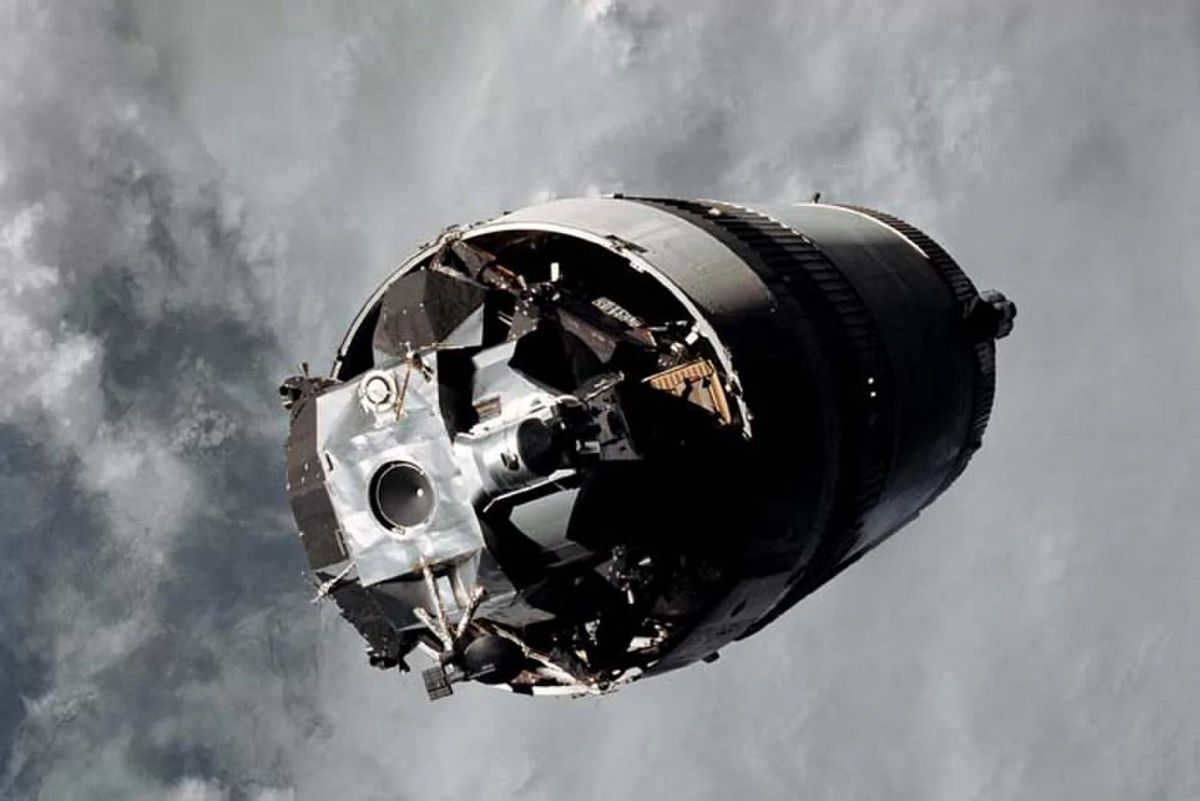
In this photograph of the third stage and the Saturn 5 lunar module, there are numerous areas of shadow that are visible.
The dynamic range, which is the difference in brightness between the darkest blacks and the brightest whites, can be observed in this image. It represents the range of brightness that the camera is capable of capturing in detail. Anything below this range will appear black in the photo, while anything above it will appear white.
Modern digital cameras typically have a dynamic range of 10-15 exposure steps. You can find a comprehensive list of the dynamic ranges for top-quality digital cameras. The list labels the exposure steps as Evs [exposure value]. Film generally has a similar dynamic range.
Due to the fact that dynamic range changes exponentially, the contrast between the light intensity of black and white pixels in a camera with 15 exposure steps would amount to 2 15 , which equals 32 768. Another method of expressing this dynamic range is 32,768:1, implying that the maximum range for capturing details before backlighting occurs is 32,768 times greater than the minimum threshold at which the photocell stops functioning.
Photographing in Daylight
A crucial aspect to grasp when it comes to capturing images of celestial bodies such as the moon and planets, including our very own Earth, is that these photographs are taken during daylight and depict the sunlit side of the object. To put it simply, the object is illuminated by the sun’s rays.

This image captures the illuminated side of our planet, with the sun shining brightly upon it in space.

This image captured at the Apollo 15 landing site showcases a remarkable daytime scene. Although the sky appears dark, resembling a nocturnal view of the Moon, it is important to note that the photograph was actually taken on the illuminated side of the Moon, facing the sun. Therefore, the level of brightness depicted in the image is equivalent to that experienced on Earth during daylight hours.

This is a picture taken during daylight hours of the planet Jupiter. It is not a picture taken at night when the stars are visible. Although Jupiter is usually seen in the night sky, this particular photo captures the illuminated day side of the planet facing the Sun. A similar situation occurred during SpaceX’s recent launch of a Tesla car into space, where the car was also illuminated by the sunlight.
Comparison between photographs taken during the day and at night
Now that we have gathered all the necessary information, let’s begin exploring the process of comparing images of the Earth and Moon taken during daylight with photographs of stars captured at night. Initially, we will examine the camera settings utilized during the Apollo missions, as well as other daytime and ground-based images of astronomical entities. Subsequently, we will analyze the settings employed when photographing the stars. Finally, we will input the various settings into the calculator and determine the number of exposure steps that separate properly exposed star photographs from the Apollo photos and other daylight images of celestial objects.
If we discover that the variation in exposure increments exceeds 15, it would imply that cameras capturing celestial objects such as the day side of the moon, Earth, or other planets, or objects in daylight like Tesla, would be unable to capture images of stars. It is important to keep in mind that 15 represents the maximum difference between the brightest and darkest tones that a camera can capture, so the actual number of exposure increments between the subject and the darkest areas would be lower. This is because, typically, a medium brightness exposure is selected for the subject, rather than the maximum. In the Earth photograph above, the planet is not at the highest end of the brightness range, so the gap between the Earth’s brightness and the lower end of the dynamic range would be more like 7 increments instead of 15. This is because the Earth falls somewhere in the middle of the photo’s dynamic range.
Searching for the authentic exposure settings – starlight
I have handpicked three images from our subreddit as prime illustrations of starry captures. The photographer has precisely mentioned the exposure settings for each of them.
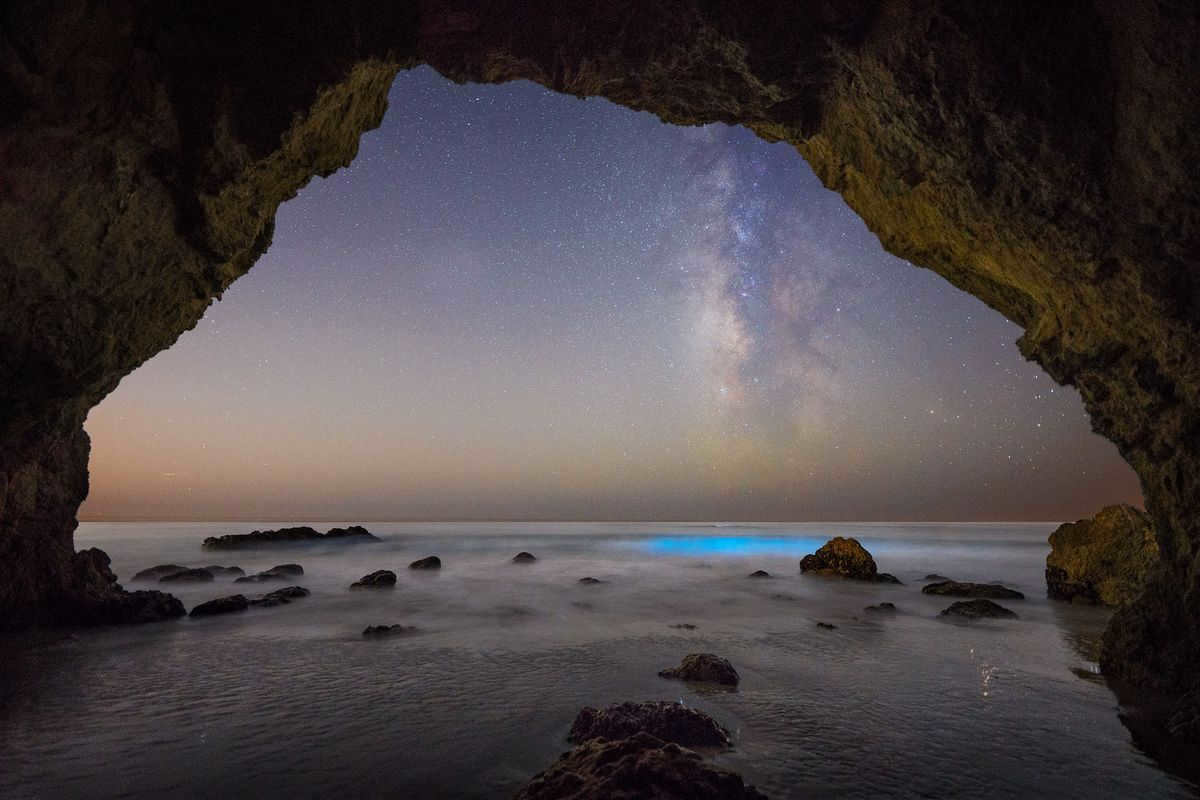
Witness the phenomenon of bioluminescence in Malibu as it illuminates the night sky, creating a stunning contrast against the backdrop of the Milky Way. Captured with a shutter speed of 13 seconds, an aperture of f/1.8, and an ISO of 4000.
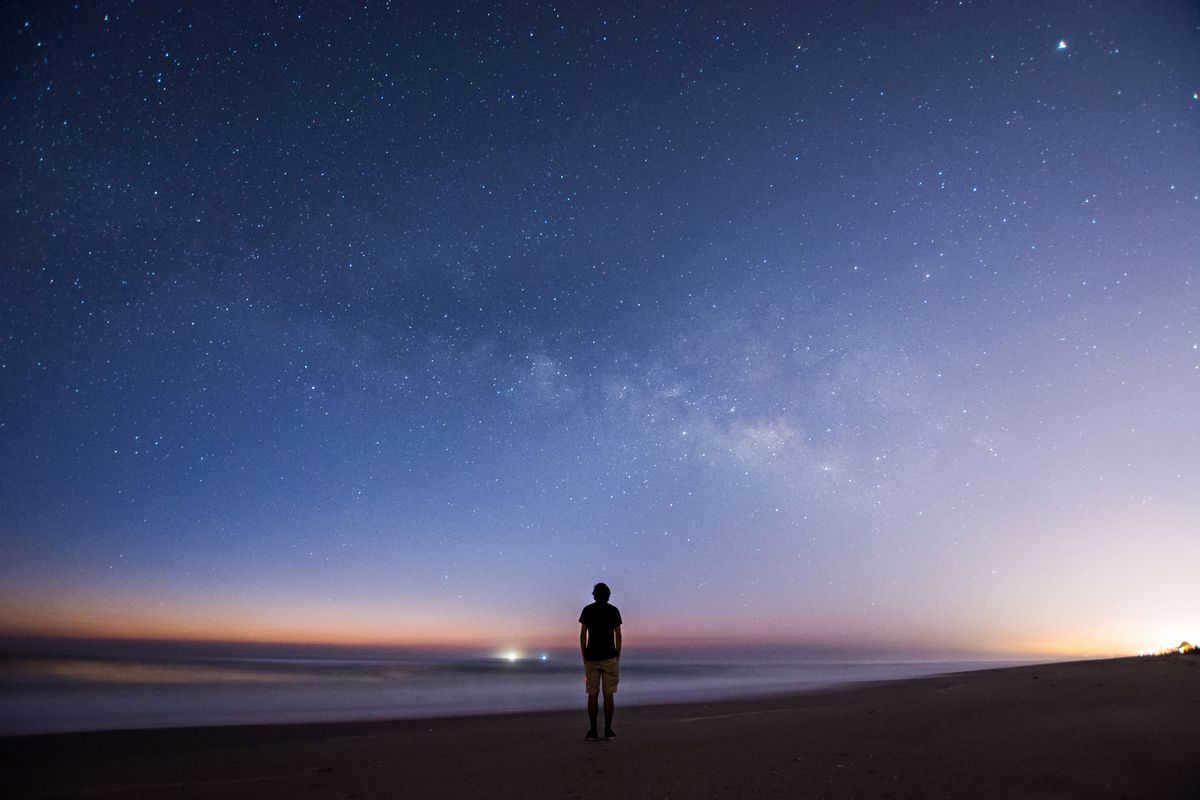
The Milky Way can’t be seen in space due to various factors. One possible reason is the brightness of the stars themselves, which can make it difficult to distinguish individual stars within the galaxy. Additionally, the presence of dust and gas in space can obscure our view of the Milky Way. This image shows the Milky Way before dawn over the Atlantic, captured with a shutter speed of 25 seconds, aperture of f/3.5, and ISO of 2500.

Milky Way over a yacht; shutter speed: 13 seconds, aperture: f/4.0, ISO: 6400.
Looking for optimal exposure settings – daytime
In the realm of photography, there exists a widely known guideline called the “Sunny 16” (or F/16 rule) which suggests that to achieve proper exposure for a photograph captured in sunlight, one should set the aperture to f/16 and the shutter speed to the reciprocal of the ISO value; thus, an ISO 100 photo would require a shutter speed of 1/100th of a second. For our purposes, let us consider this rule of thumb as our initial reference point for ideal daytime photo settings: ISO 100, f/16, and a shutter speed of 1/100.
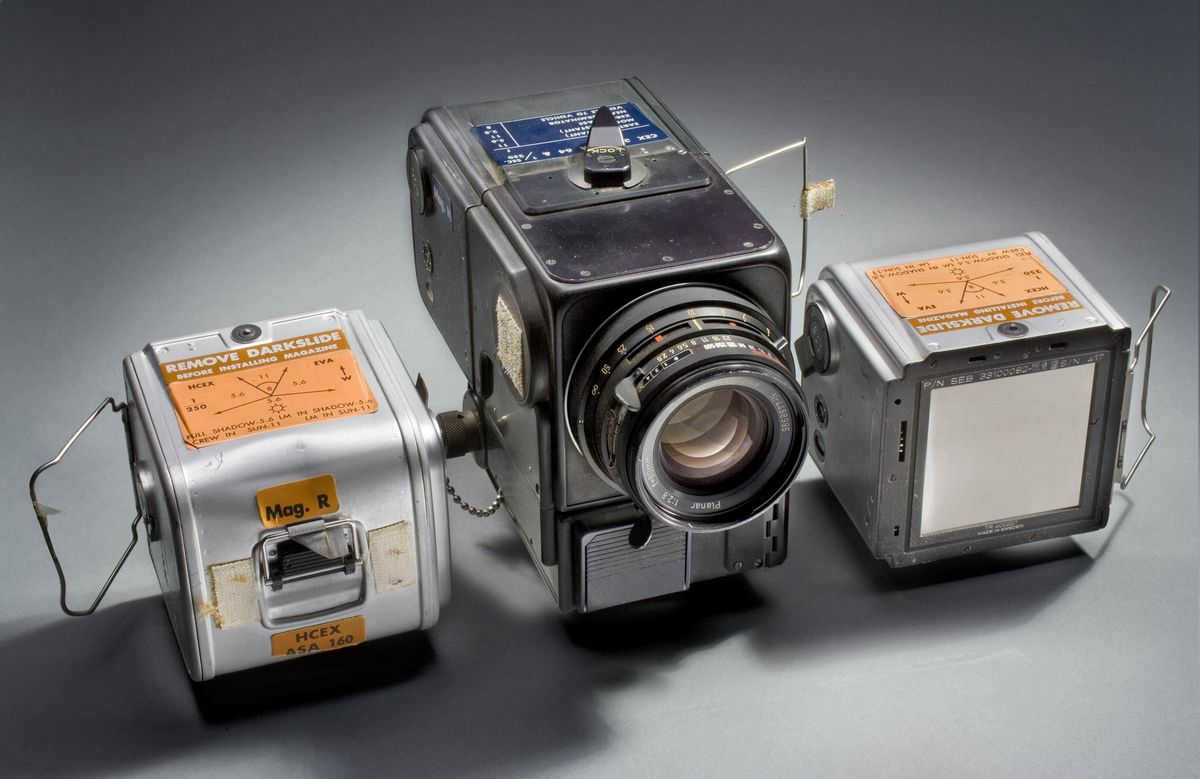
The Apollo moon missions will serve as our second point of reference. A photograph of some camera equipment showcases the specific settings employed for capturing images on the lunar surface. Direct your attention to the film reel located on the left-hand side. In terms of film sensitivity, the ASA value corresponds to the modern ISO system, which in this case is ISO 160. The shutter speed has been configured to 1/250th of a second. The instructions dictate an aperture range of f/5.6 to f/11. Considering the average value falls at f/8, we will adopt this as our baseline. The disparity between f/5.6 and f/11 amounts to a mere two stops, thus rendering it inconsequential.
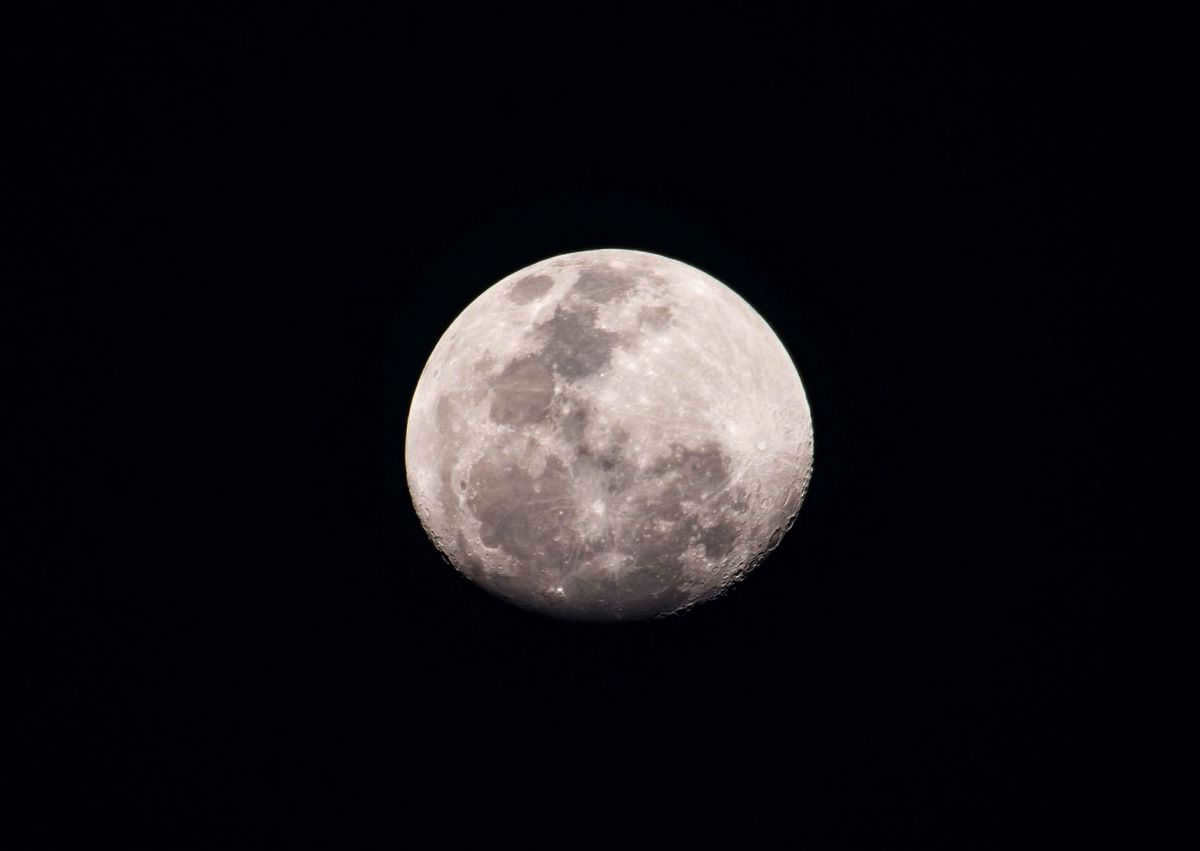
The astronaut Paolo Nespoli took this amazing photo of the moon. On the original page, you can find the camera settings: ISO 400, f/6.3, and 1/500.
| Sunny 16 | 1/100 | f/16 | 100 |
| "Apollo | 1/250 | f/8 | 160 |
| Paolo Nespoli | 1/500 | f/6.3 | 400 |
Bringing everything together
So, what is the number of steps between the daytime shots and the star photos? There are numerous online calculators available that can calculate exposure, but I personally utilized this particular one. By inputting the settings of the two photos, it provides the exposure difference in steps. Here is a table indicating the disparity between daylight and starlight photos. Keep in mind that the crucial threshold is 15. Anything exceeding 15 signifies an excessive dynamic range, and any attempt to capture both subjects will inevitably result in either backlighting or shading.
| The difference between the images in steps for The Milky Way and Malibu is 22 for Sunny 16, 20.67 for Apollo, and 19.67 for Paolo Nespoli. |
| The difference between the images in steps for Milky Way over the Atlantic is 20.33 for Sunny 16, 19 for Apollo, and 18 for Paolo Nespoli. |
| The difference between the images in steps for Stars above the yacht is 20.33 for Sunny 16, 19 for Apollo, and 18 for Paolo Nespoli. |
A celestial body called “Sun.”
The Milky Way consists of billions of stars. Approximately 75% of them are red dwarfs with extremely low luminosity. The remaining stars fall into the category of yellow dwarfs, which emit much more light due to their higher surface temperature. The Sun falls into this spectral classification.
Not only is it the sole star in our solar system that emits light, but it is also the nearest star to our planet. The Sun is much closer to us than, for instance, Sirius, the most brilliant star in the Canis Major constellation. That is why the Sun’s radiance appears brighter to us than anything else, despite Sirius being 25 times more luminous than the Sun.
The reason why stars are not visible from Earth during the day is due to the blinding brightness of the Sun. The Sun’s luminosity is so intense that it overwhelms the light emitted by other stars, making them completely invisible. The Sun’s rays are incredibly powerful, to the point where they outshine any other source of light in our solar system. As a result, the radiance from distant stars is unable to penetrate through the Sun’s brilliance and reach the surface of our planet.

The Protective Atmosphere
The composition of Earth’s atmosphere includes various elements such as carbon dioxide, nitrogen, and oxygen. As light rays pass through the atmosphere, they become scattered in different ways, depending on their wavelength:
Light rays with shorter wavelengths scatter more strongly and contain a higher proportion of blue. This is why, regardless of where we look in the sky, we observe sunlight being reflected by the atmosphere, resulting in the perception of a blue sky.
The intensity of the Sun’s radiation, which is scattered and refracted by the atmosphere, is strong enough to render even the most luminous stars invisible in its presence. However, during the nighttime, when the Earth’s protective shield does not scatter the sun’s rays, it becomes easier to observe various celestial objects in the sky.
Observing the stars in close proximity to urban areas presents a challenge not only during daylight hours, but also at night. The use of a telescope proves practically ineffective, as very little can be seen. The culprit? Light pollution. Streetlights, industrial spotlights, and the illumination of entertainment, sports, and administrative facilities all contribute to the interference, hindering the visibility of starlight.
A special scale has even been developed to assess the extent of light pollution. This scale allows for the evaluation of the clarity and visibility of astronomical objects in the night sky, as well as the severity of the interference. The scale was created by John E. Bortle, an American astronomer.
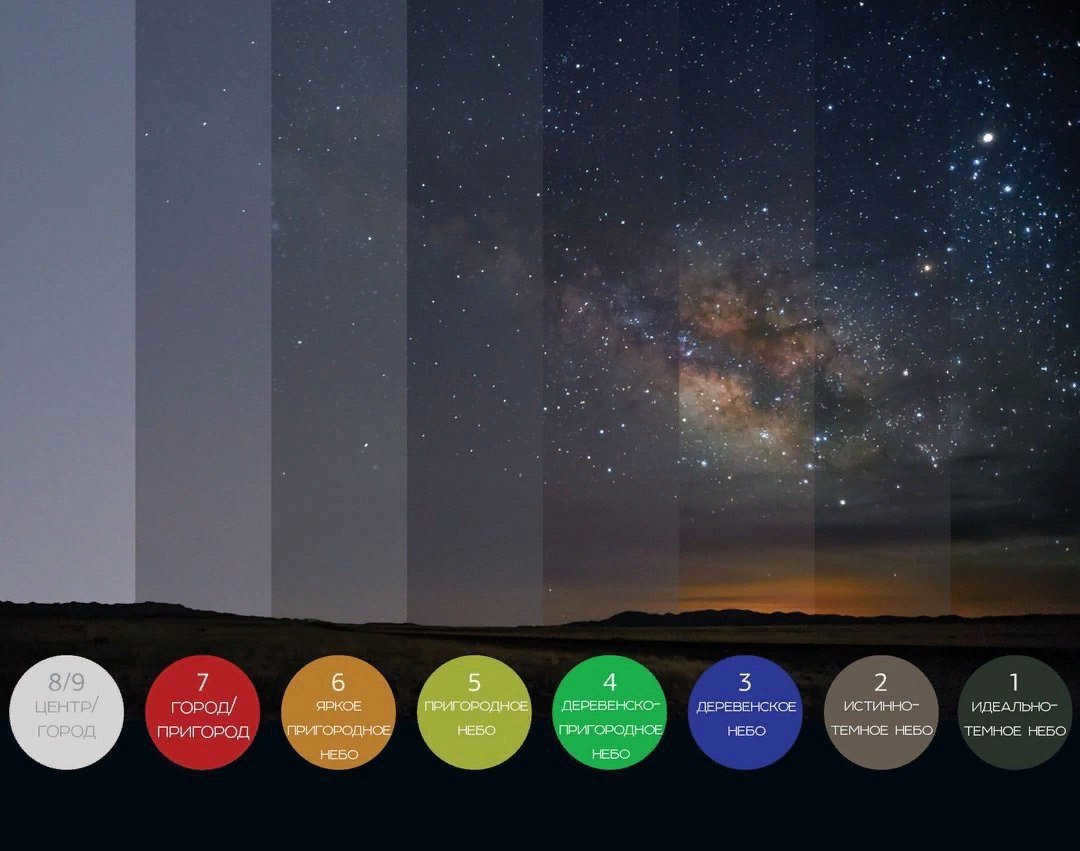
Based on this scale, the final two categories are dedicated to the urban night sky. This indicates that only the most luminous constellations are visible to the naked eye, and even then, only in clear weather. The reason for this is the excessive illumination from various artificial sources that permeate the sky above cities.
Why aren’t stars visible in the photos?
When looking at photographs of our planet taken from the International Space Station, one may notice that the sky surrounding the Earth appears completely black, devoid of any stars. This raises the question: why aren’t the stars visible in these images? The visibility of stars is influenced by various factors.
- Solar radiation brightness: The same principle applies when viewing stars from Earth. The intense radiance emitted by the Sun obscures the faint light of other stars, making them visually indistinguishable in photographs.
- Camera characteristics: The sensitivity and resolution of the camera’s image sensor, the exposure time, shutter speed, and dynamic range all play a role in capturing starlight. These factors determine the level of detail and brightness that can be captured in a photograph.
The quality of space photography is influenced by exposure and shutter speed settings, which dictate the duration of time that light can reach the camera’s photosensitive element through an open shutter. The more light that enters the camera, the brighter the resulting photograph will be.
However, when the camera is set to a longer exposure time, an abundance of stars are captured in the photographs that are not visible to the naked eye.

The human eye is comparable to a precious diamond
There exists another explanation for why stars are not always visible in the night sky, and it lies in the unique characteristics of the human eye. Our eyes possess a specific sensitivity and can only perceive a limited spectrum of light waves.
Furthermore, the structure of the eye lens is not uniform and lacks sufficient transparency. As a result, stars, when observed without the aid of a telescope, appear to be radiant.
Can stars be observed from outer space?
As per the accounts of astronauts, stars and star clusters are much more visible from space compared to the Earth’s surface. This is because the atmosphere doesn’t scatter or refract light rays, resulting in starlight that doesn’t flicker or shimmer with various colors, but instead spreads evenly and brightly. However, in order to observe the stars, one must be in the shadow, where sunlight doesn’t overshadow the glow of the stars.
Therefore, astronauts aboard the International Space Station (ISS) are able to see the stars only when the Earth acts as a shield, blocking the station from direct sunlight.
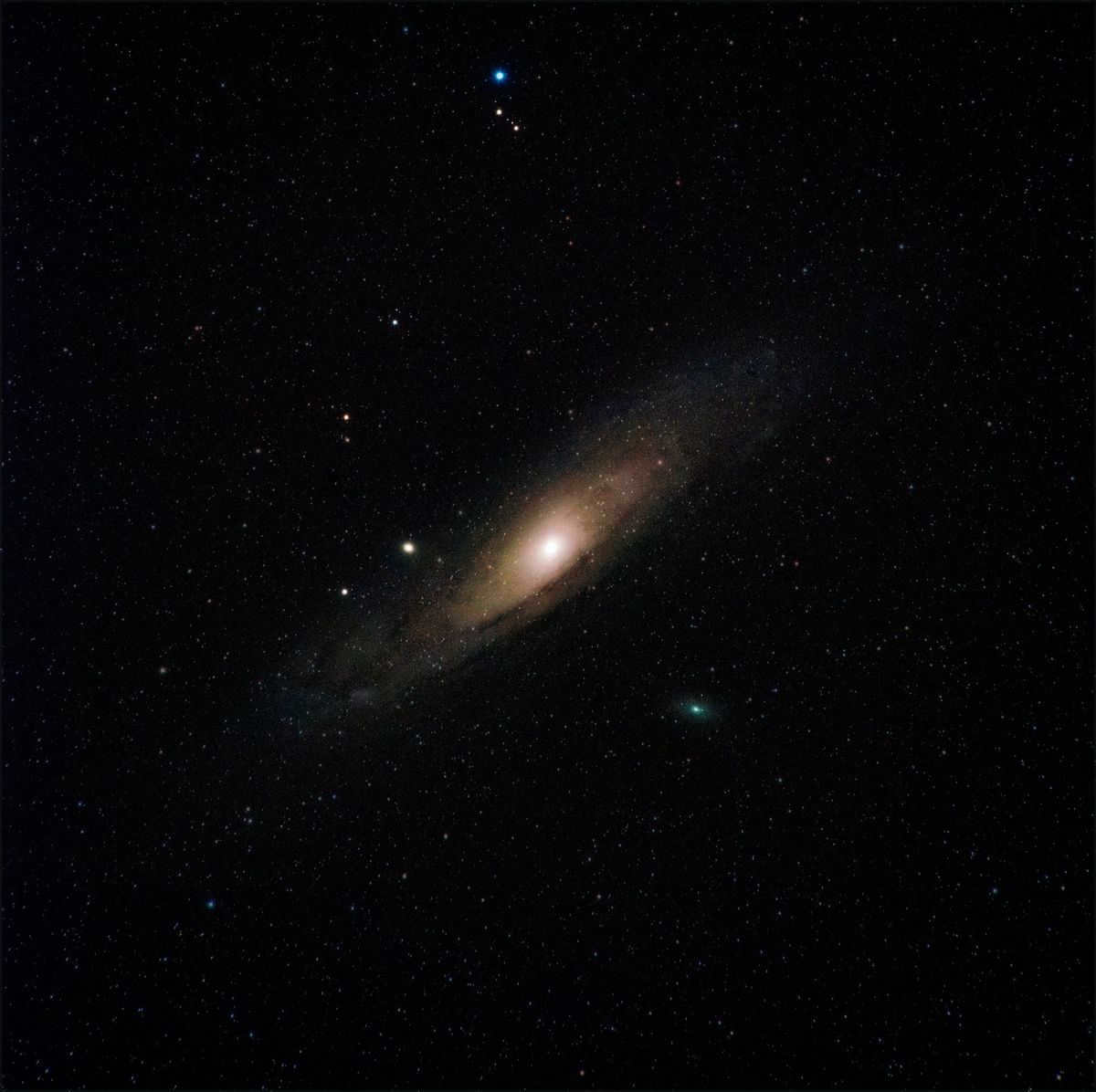
Is our perception of stars accurate?
If we take a moment to contemplate, what we actually perceive are not the stars themselves, but merely the light or other forms of radiation they emit. The light emitted by stars reaches us at the speed of light, traversing distances of tens and hundreds of millions (billions) of kilometers. This implies that the light we see is subject to a certain delay. In essence, we are peering into the past and witnessing a sort of spatial projection of faraway stars on our celestial sphere. It is a snapshot frozen in time.
If you are unable to observe stars in the sky during daylight hours, why not illuminate your own world a little? Experience the genuine cosmic allure and uncover uncharted realms with the unique selections from the Cosmomerch brand.
Perceive the world from the perspective of an authentic astronaut, discover the cosmos through correspondence on a daily basis. Marvel at the planets within our solar system, venture beyond its boundaries with themed T-shirts and hoodies crafted for those who are captivated by the radiance of far-off star clusters and galaxies.
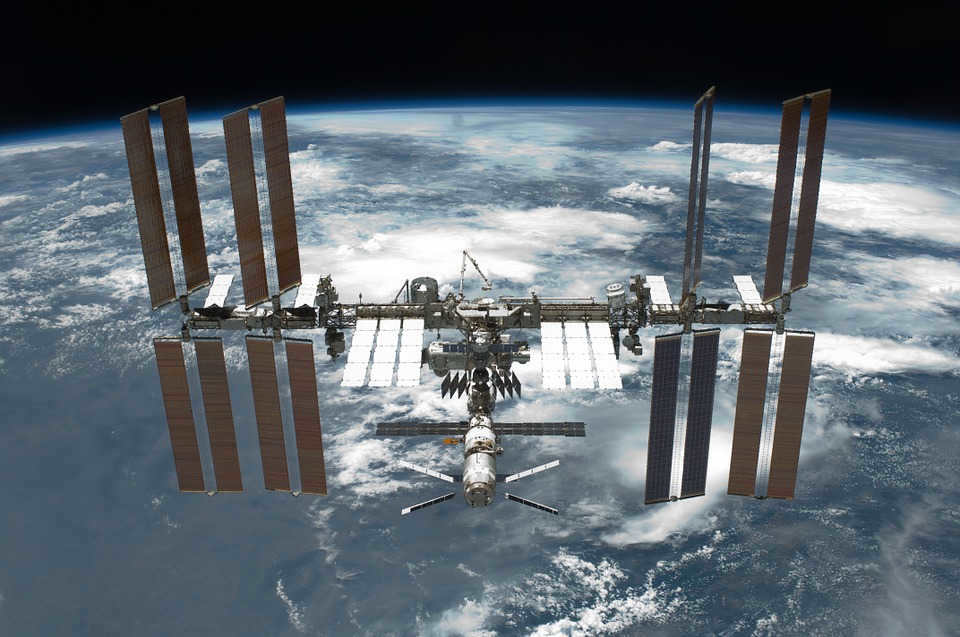
When photographs are taken from the surface of the Moon or from Earth’s orbit, the sky appears entirely black, with only occasional stars visible. However, astronauts have the opportunity to see stars regularly and distinctly, but only in specific conditions.
Space images unambiguously demonstrate that the sky in space is consistently dark. However, there is a crucial detail – the sky often appears devoid of stars.
As a result, some individuals conclude that stars are not visible in space at all and question why. In reality, astronauts observe stars on a daily basis, but they are rarely visible in photographs. To comprehend why this occurs, it is important to acknowledge that the darkness of the sky does not always indicate the visibility of stars.
Why is it impossible to observe stars during daylight?
Let’s explore the reason behind our inability to see stars during the day on Earth. It’s not because the sky becomes overly blue during that time.
The sky appears blue due to the scattering of sunlight by our atmosphere, particularly the shorter wavelengths such as blue and violet. This phenomenon affects the majority of the visible spectrum.
However, the sky’s color does not hinder our ability to observe the Moon during the day. In fact, there are certain circumstances where we can even spot Venus, Mars, and Jupiter with the naked eye in the daytime sky. The explanation lies in the sensitivity of our eyes to different levels of illumination. During the day, the intensity of sunlight is simply too overpowering in comparison to the faint radiation emitted by distant stars. On the other hand, our natural satellite, the Moon, reflects enough light to be visible.
When in space, the presence of the atmosphere doesn’t obstruct our view. This is why the sky remains dark even during the day. However, the level of brightness is still too high when the Sun or the sunlit part of the Earth is present. Our eyes adjust their sensitivity to these conditions, causing the stars to be invisible in the black sky.
Imagine a scenario where you leave a dark room after sunset and step into a brightly lit area. The sky above you may appear dark, but it becomes extremely challenging to spot the stars. The same situation applies to the sunlit side of the Earth, as our natural light is much brighter than any artificial lamp.
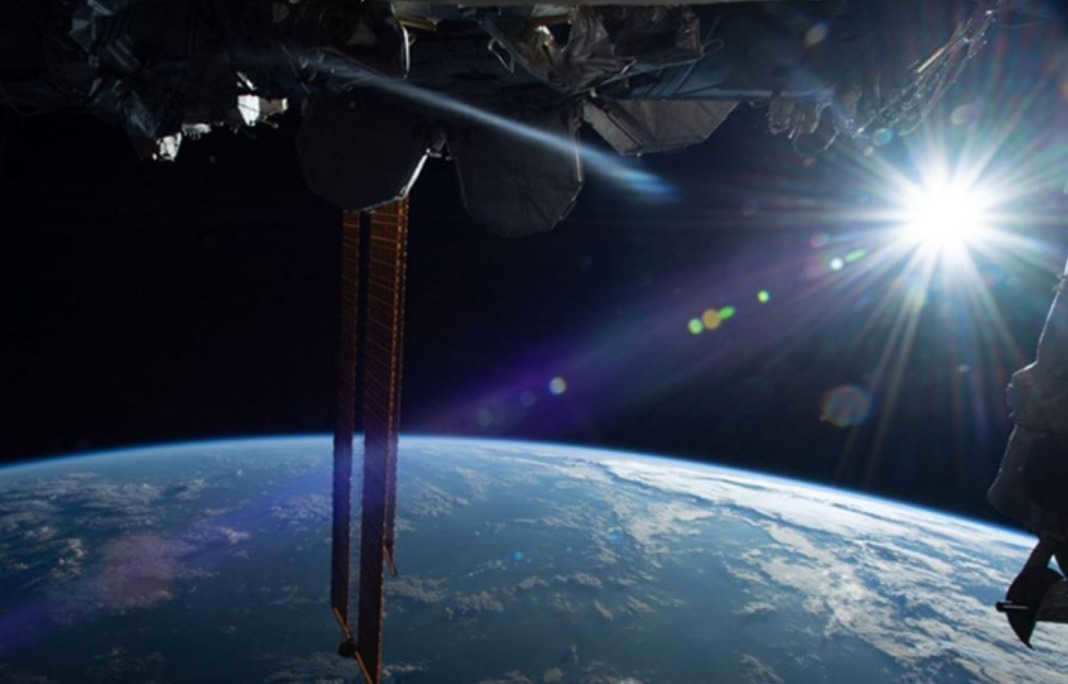
Did the Apollo astronauts witness the sight of stars?
When the Apollo 11 astronauts became the first humans to step foot on the Moon, they were met with the peculiar experience of a pitch-black sky devoid of any visible stars. Upon reviewing the photographs taken during their mission, journalists noticed the absence of stars and inquired about their presence to the astronauts upon their return.
Neil Armstrong, in response, stated that he did not see any stars and provided an explanation for this phenomenon. All manned modules landed on the Moon during daylight hours, which last an average of 14 days and 18 hours on our satellite. Experts have determined that nighttime on the Moon poses significant hazards for human occupation.
Furthermore, all landings were conducted on the side of the Moon that is visible from Earth. As a result, not only was the Sun constantly present in the sky, but our own planet also provided nearly a hundred times more illumination than the full Moon.
Nevertheless, Neil Armstrong later mentioned that by concealing oneself in the shadow of the lunar module, it was possible to observe the most brilliant stars in the celestial sphere. An even more favorable vantage point would be at the base of a remarkably profound crater or ravine, although the astronauts did not carry out such endeavors.
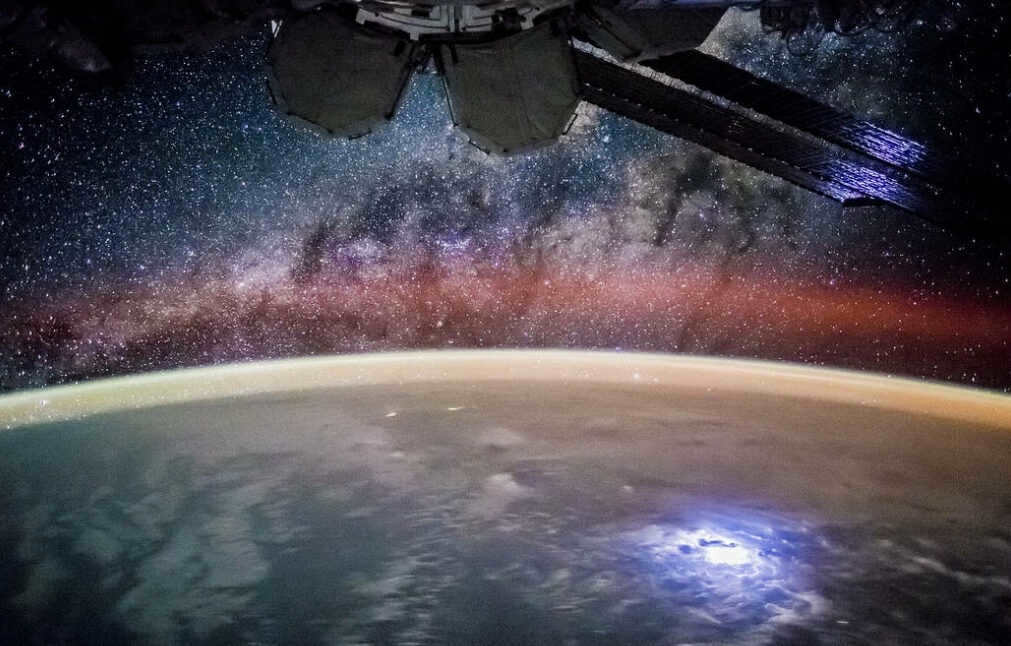
Why are photographs of stars rare from space?
The process of capturing stars in a photograph from space is similar to how the human eye perceives them. However, the camera’s sensitivity is determined by the duration of time that the light passes through the lens and illuminates the film or sensor. This time is known as the shutter speed. In order to capture pictures of stars at night, the shutter speed needs to be much slower compared to taking pictures of objects and landscapes during the day.
Therefore, a camera on board a space station that is orbiting the illuminated side of the Earth has an even lower chance of capturing stars compared to the human eye.
When a spacecraft or station is positioned above the unlit side of the Earth, it might be assumed that there would be no hindrance in observing distant lights. However, it is indeed possible to see these lights, as evidenced by the abundance of photographs available.
The only issue is that most space photos predominantly capture the Earth’s surface, orbital stations, or other space-related objects.
In the absence of sunlight, these objects are either completely invisible or barely discernible. Consequently, it is customary to capture images during the daylight hours, which unfortunately means that stars cannot be captured in these photos.
Furthermore, the space station itself emits its own illumination while passing over the night side of the Earth. This artificial lighting creates a level of light pollution similar to that found in cities, hindering our ability to observe stars.
When observing the sky from the Moon’s surface or near-Earth orbit in photographs, it appears as a solid black expanse with few visible stars. However, astronauts have the privilege of regularly and distinctly witnessing these celestial bodies, albeit only in specific circumstances.
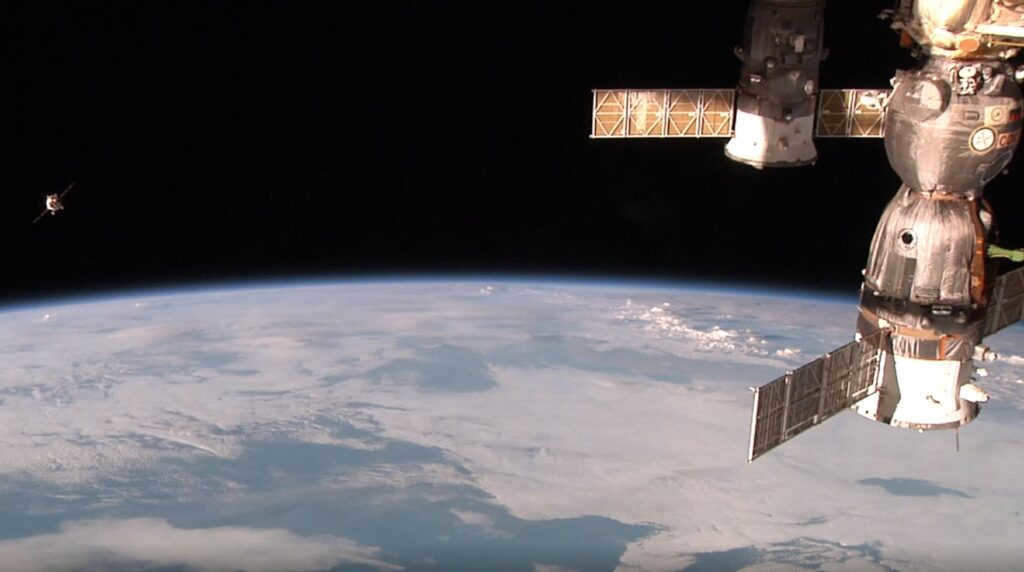
Discovering a star in a photograph taken from orbit
Many individuals on Earth form their perception of what space looks like based on photographs captured by astronauts while on a mission. These images clearly depict the perpetual darkness of the sky. However, there is a peculiar aspect to it – stars are rarely visible in these photographs.
Consequently, numerous individuals assume that stars are completely invisible in space and question the reason behind this. In reality, astronauts witness stars on a daily basis, but they are exceedingly uncommon in photographs. To comprehend why this is the case, we must first acknowledge that a dark sky does not necessarily imply the presence of visible stars.
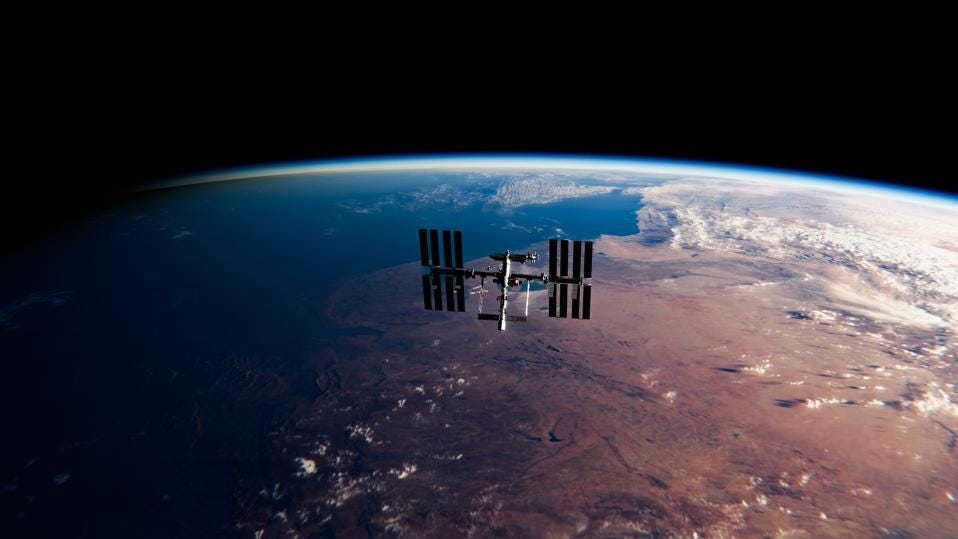
Why are stars not visible in space?
To understand why we cannot see stars during the day, we first need to consider why we cannot see them from the Earth. It is not solely because the sky is too bright during the day. The main reason is that our atmosphere scatters sunlight, particularly the shorter wavelengths of the visible spectrum, such as blue and violet light.
However, the presence of the blue sky during daylight hours does not hinder our ability to observe the Moon! Additionally, under specific circumstances, it is possible to spot Venus, Mars, and Jupiter with the naked eye in the sky during the day (if you know where to look). The reason for this is that our eyes adapt to a certain level of light, and during the day, sunlight is significantly stronger compared to distant stars, which emit much weaker radiation. Furthermore, our natural satellite, the Moon, reflects enough light for us to see it.
In the vastness of space, there is no atmospheric interference, which is why the sky remains dark during the day. However, the level of brightness in the presence of the Sun or the Earth during the daytime is still too high. Our eyes continue adjusting their sensitivity to these conditions, making it impossible to see any stars in the pitch-black sky under such circumstances.
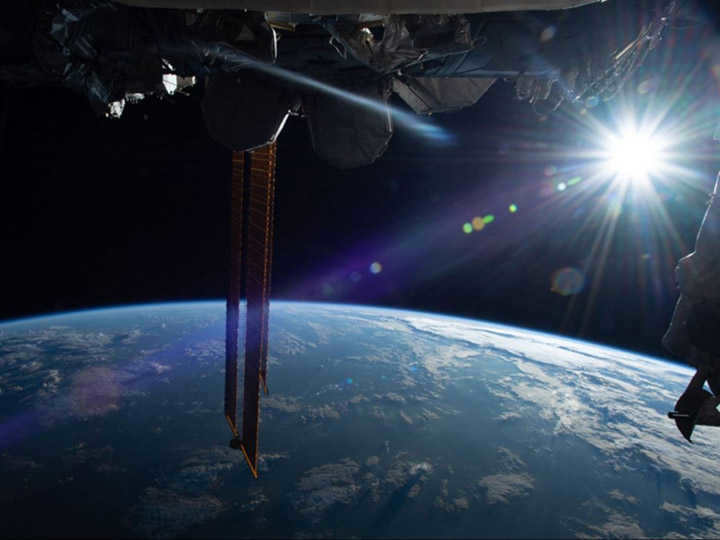
Imagine stepping out of a grocery store into a well-lit parking lot after the sun has set. The sky above appears dark, making it challenging to spot any stars. Similarly, above the sunlit portion of the Earth, the same phenomenon occurs, but to a greater extent. This is due to the fact that our star, the sun, is much more radiant than any artificial light source.
Could the Apollo astronauts witness the presence of stars?
When the Apollo 11 astronauts became the first humans to set foot on the Moon, they experienced a peculiar phenomenon where the sky appeared completely dark, devoid of any stars. This raised questions among journalists who noticed the absence of stars in the pictures captured by the astronauts. Inquisitive about this anomaly, they inquired the astronauts upon their return if they had spotted any stars during their mission.
Neil Armstrong promptly responded that they had not observed any stars during their time on the Moon, and he went on to explain the reason behind this. The lunar modules landed on the side of the Moon that was experiencing daytime, which typically lasts for about 14 days and 18 hours on our satellite. The lunar night was deemed too perilous for human habitation by experts, hence the absence of star sightings.
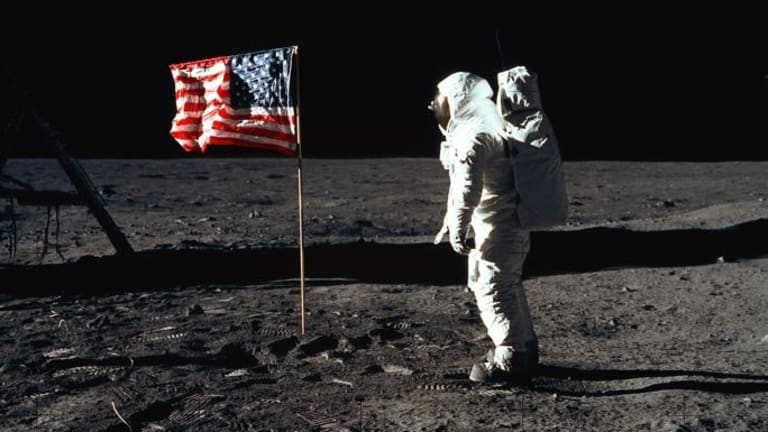
Furthermore, all the missions were executed on the hemisphere of the moon that is visible from our planet. Consequently, the sky was constantly illuminated not only by the Sun but also by the Earth, which is capable of reflecting nearly a hundred times more light than a full moon.
Nevertheless, Armstrong mentioned that if one were to seek shelter in the shadow of the lunar module, it would be possible to observe the brightest stars in the sky. An even better view could potentially be obtained from the depths of a deep crater or gorge, although the astronauts did not conduct any experiments of that nature.
Why is it uncommon to see pictures of stars from orbit?
Capturing pictures of stars from orbit is a rare occurrence due to the way cameras function. Similar to the human eye, a camera’s sensitivity is controlled by the duration of time that light passes through the lens and reaches the sensor, whether it be photographic film or CCD-matrix. This duration is known as shutter speed or exposure. When photographing stars at night, the required shutter speed is much longer compared to capturing images of objects and landscapes during the day. Consequently, the camera on a space station orbiting over the illuminated side of the Earth is even less likely to capture images of stars compared to the human eye.
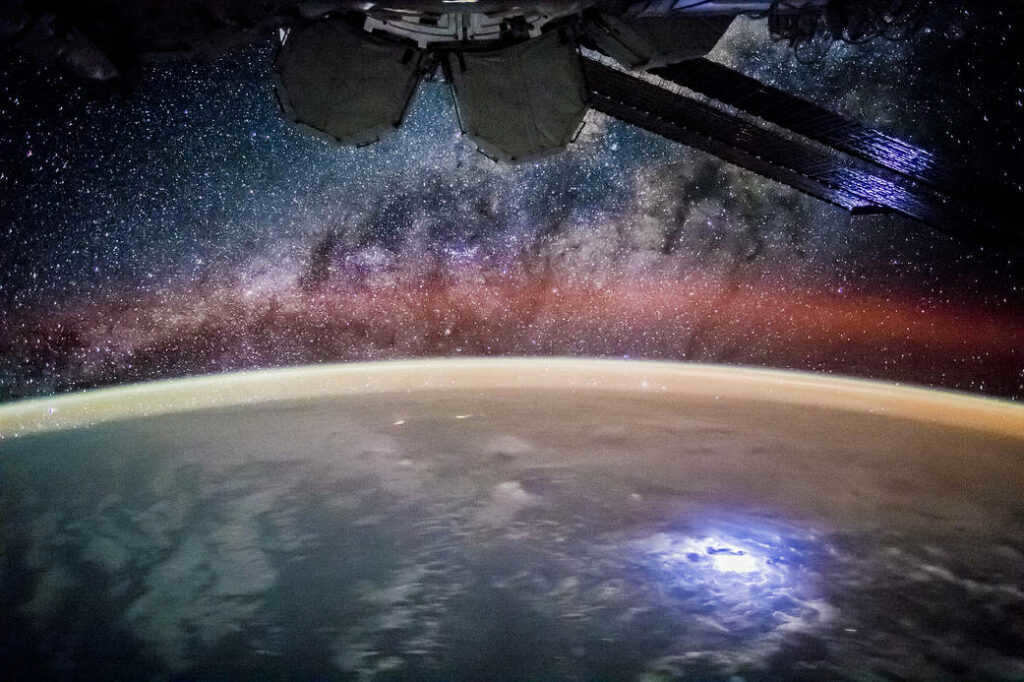
One can reasonably assume that if a spacecraft or station is positioned above the unilluminated side of the Earth, there should be no difficulty in observing distant celestial bodies. These luminaries are indeed easily seen, and there exist numerous photographs as evidence.
The only issue arises when considering that most photographs of outer space capture the Earth’s surface, the orbiting station, or other space objects. In the absence of sunlight, these objects are either completely invisible or barely visible. Consequently, they are typically photographed over the illuminated portion of the Earth, where no celestial bodies are observed.
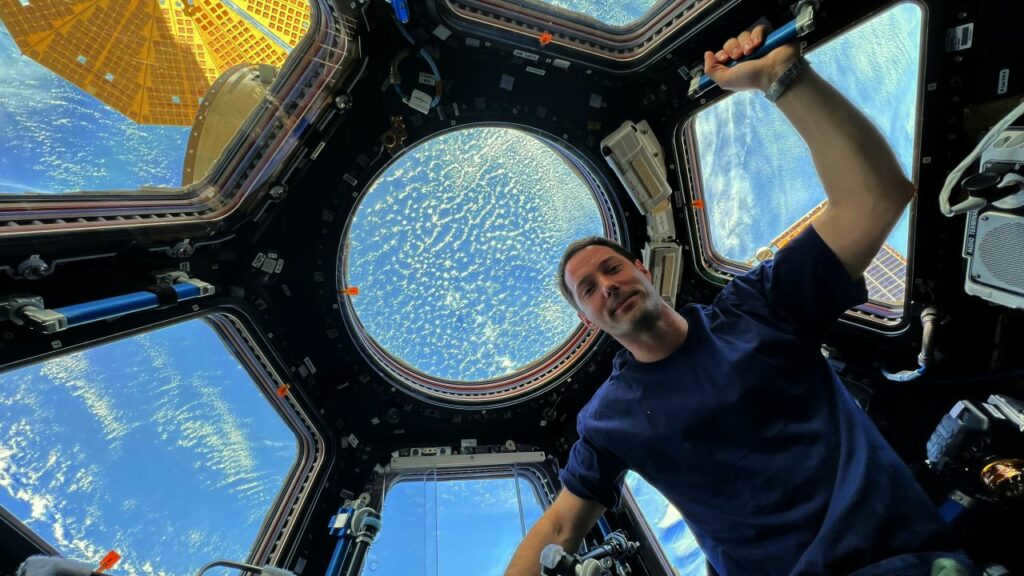

Aside from everything mentioned above, the space station possesses its own illumination that lights it up as it traverses the night side of the Earth. This illumination creates light pollution, much like the urban lights that hinder our ability to appreciate the stars directly from the streets. Consequently, the optimal way to observe the stars in space is in complete darkness. In such circumstances, they can be observed more clearly than anywhere else. This is why the two powerful telescopes, Gaia and JWST, “conceal” themselves from the Sun at the Lagrangian point L₂ behind the Moon. The images they capture of distant celestial objects are flawless.
Discover the most fascinating stories and information on our Telegram channel!

I have been engaged in popularizing science in Ukrainian for 10 years as a news editor and article author. I hold a degree in Technical Sciences and have previously taught civil engineers. However, in recent years, I have been focusing on sharing knowledge about various scientific fields with the general public. Space, in particular, has always been a passion of mine. Throughout my work, I strive to pay homage to the scientists behind groundbreaking discoveries and the engineers responsible for space technology development.
This situation is an extraordinary example of a “space program” propaganda failure, as different astronauts provide contradictory answers to the same question. Some claim that stars are not visible, while others enthusiastically describe a vibrant cosmos with clearly visible planets and satellites.
It is worth noting: none of the presented segments show any visible stars, despite some characters mentioning them as if it was a common occurrence, which is immediately contradicted by their colleagues.
Can stars be seen in space and on the moon? The astronauts provide an answer.
Observe the behavior of the three FIRST individuals in HISTORY who have just returned from the moon.
If you had recently been walking on another planet, would you be sitting there with such gloomy expressions, anxiously fidgeting with your pens and struggling to recall simple details?

Instead of an interview, it’s more like a performance.
As they go along, they’re improvising answers.

And where can one find these innumerable stars taking a break for a cigarette? 0_o
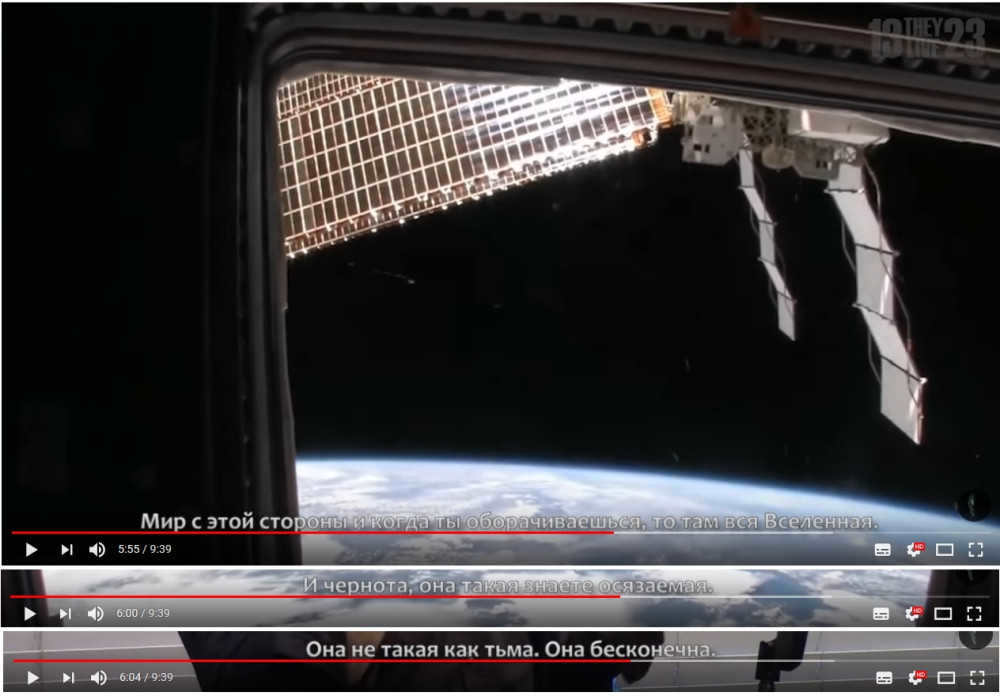
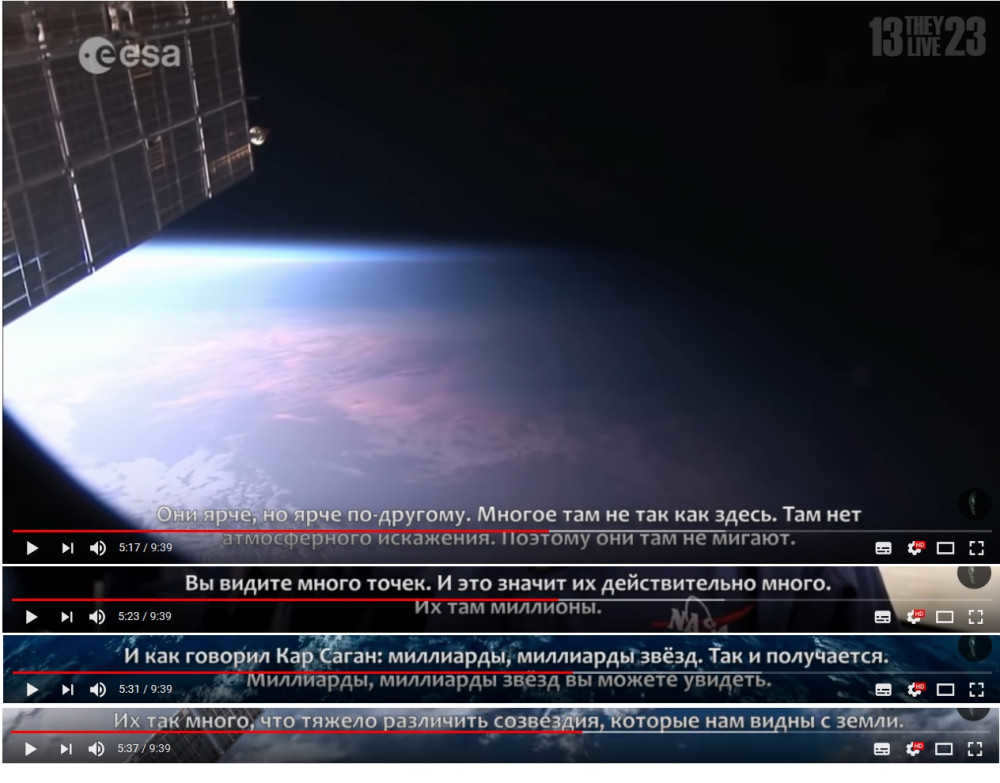
We are discussing a designer who was unable to reproduce the black color of the vast universe.
Which specific designer are we referring to and what exactly did they fail to replicate? Was it the tulle curtains in the tech bay or the graphics in the clip we are currently viewing?
What is the purpose of creating graphics if everything can simply be captured on cameras, unless it is meant to conceal the true nature of things?
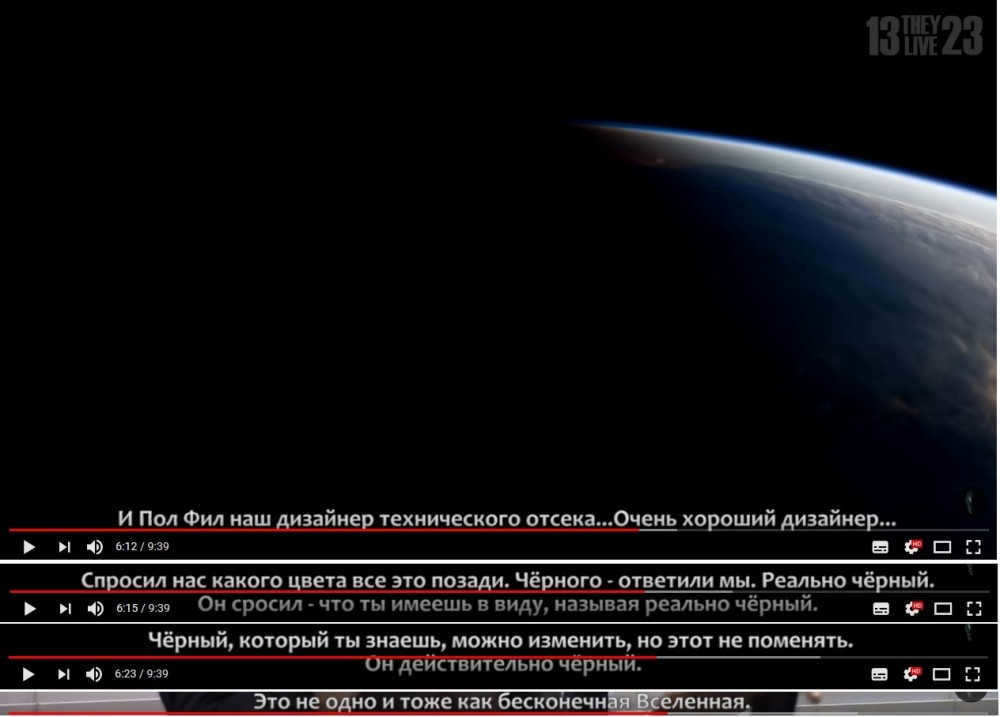
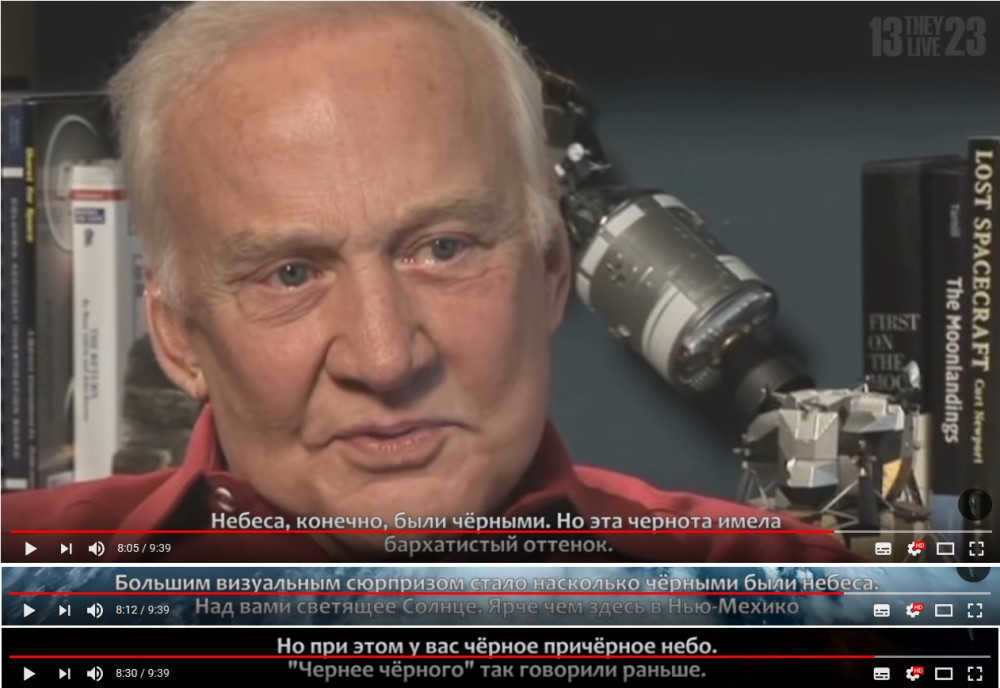
It’s an absolute disaster, mate!
So whom shall we trust, comrades?
Perhaps they inhabit different realms or journey through different dimensions?
Maybe some of them possess smudged windows while others have illuminated ones?
Perhaps they possess distinct fun gas oxygen or spoiled canned sustenance?
Maybe they’re under a hypnotic spell, as individuals with schizophrenia wouldn’t be permitted in space, would they?
Or are they still serving us blatant nonsense about space, without much concern for inconsistencies?
It will be intriguing to hear the arguments of the esteemed and and courteous skeptics on the matter.
Reality is multi-dimensional, and there are multiple perspectives on it. The ones presented here are just a few. It’s important not to take them as the ultimate truth, as the truth is limitless and each level of consciousness has its own understanding of the world and way of processing information. We learn to discern what is ours and what is not, and how to gather information independently.
VK Facebook YouTube Instagram Twitter Telegram
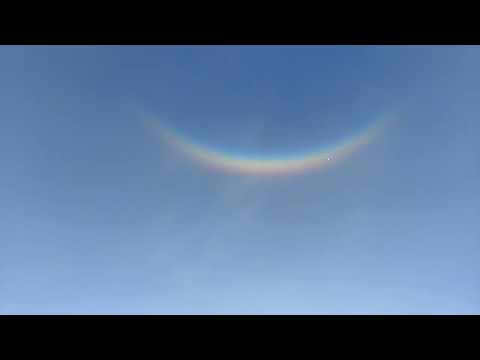 Have chemtrails disappeared? Remarkable halo and dome )
Have chemtrails disappeared? Remarkable halo and dome )
 The quietness of outer space
The quietness of outer space
 Only the ocean. Only the waves. Only embrace your true self
Only the ocean. Only the waves. Only embrace your true self
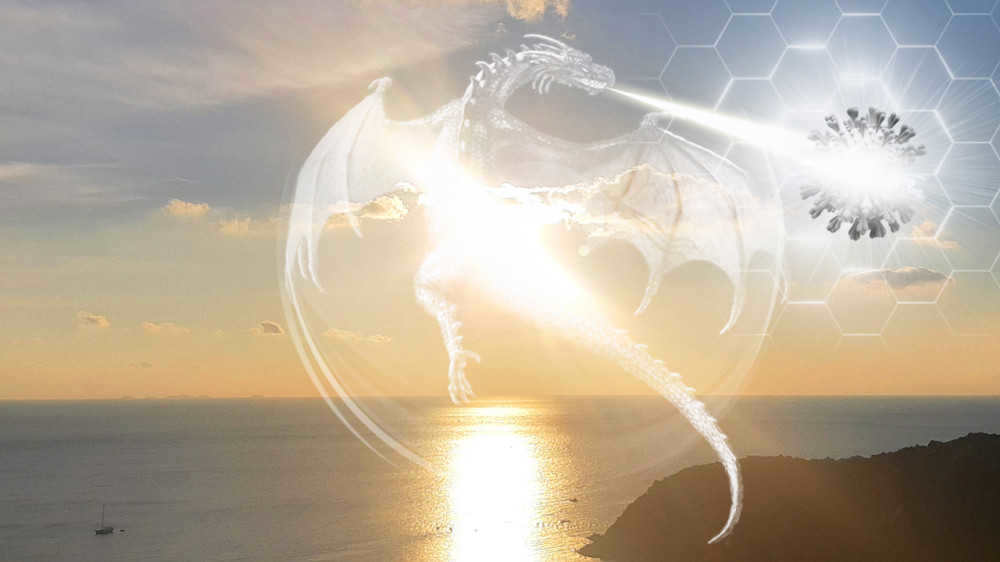 The wonders of nature and its ethereal beings. Join us for the spring flash mob #spirits_clouds.
The wonders of nature and its ethereal beings. Join us for the spring flash mob #spirits_clouds.
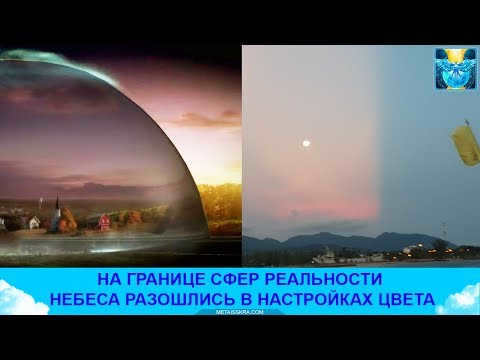 The celestial canopy enveloping our planet and the emergence of revitalizing forces. Experience the kaleidoscope of hues in the heavens, where different realms of existence converge.
The celestial canopy enveloping our planet and the emergence of revitalizing forces. Experience the kaleidoscope of hues in the heavens, where different realms of existence converge.
 Is it possible to observe the International Space Station (ISS) from Earth without any optical aid?
Is it possible to observe the International Space Station (ISS) from Earth without any optical aid?
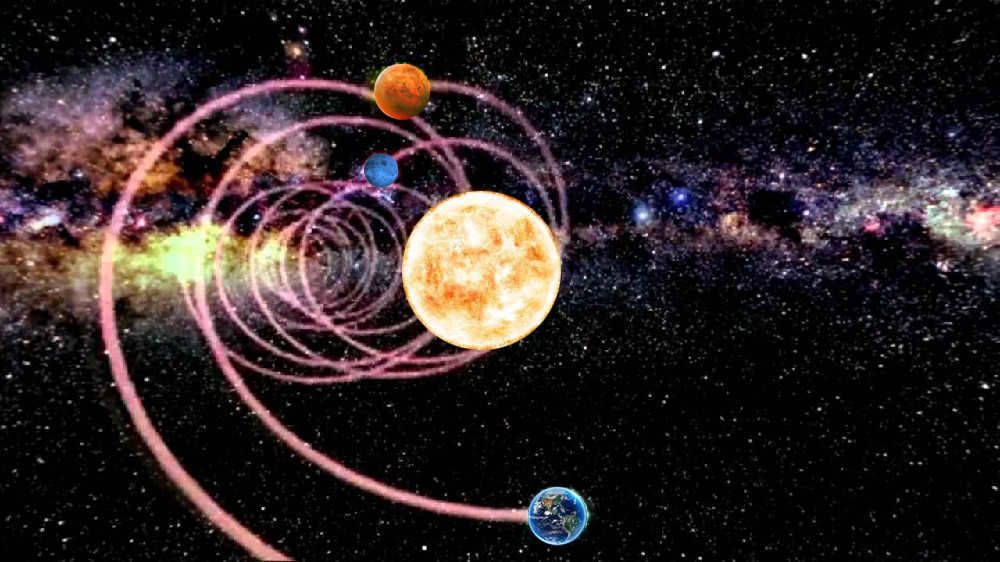 Does the sunrise and the rotation of the Earth affect your perception of reality, or are you confined to preconceived notions?
Does the sunrise and the rotation of the Earth affect your perception of reality, or are you confined to preconceived notions?
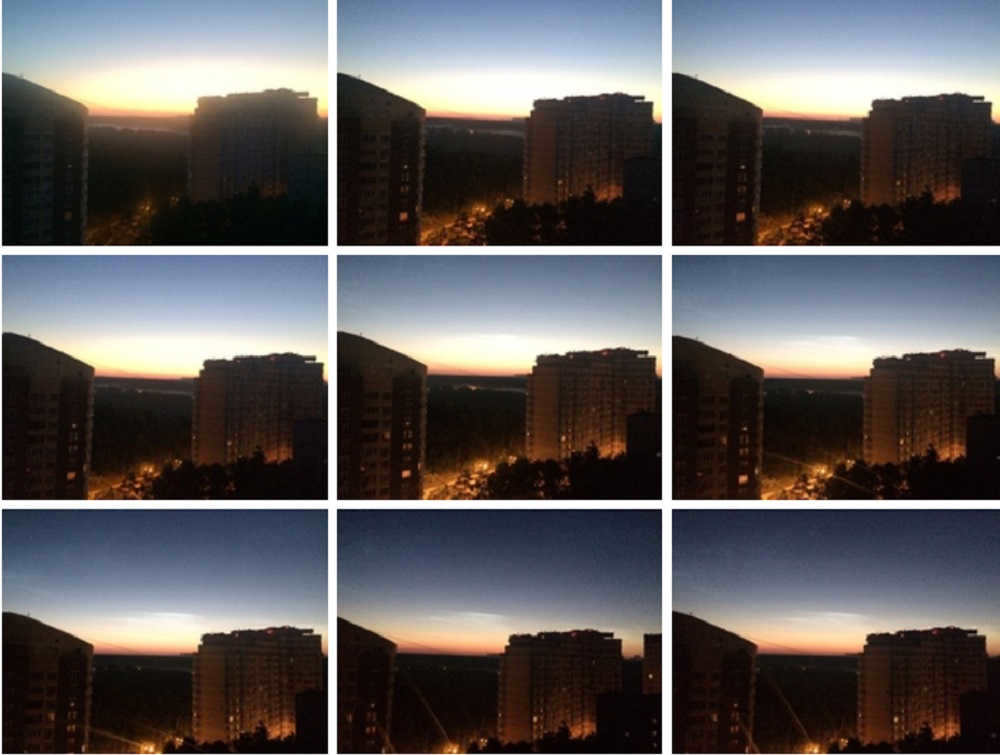 Sunrise in Moscow at 2:30 a.m. and the Earth’s axis rotation
Sunrise in Moscow at 2:30 a.m. and the Earth’s axis rotation
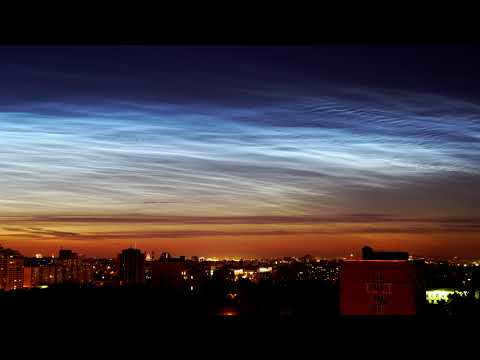 Glimmering clouds above Moscow, explosion of a supernova, shift in Earth’s axis, and the arrival of new energies
Glimmering clouds above Moscow, explosion of a supernova, shift in Earth’s axis, and the arrival of new energies
About this magazine
- Cost of placement 1,000 tokens
- Social capital 730
- Friends with
- Duration 24 hours
- Minimum bet 1,000 tokens
- View all promotional offers
******************************
Indeed, why did you decide to throw it in? I was aware that it would only stir up trouble and lead to an intense overreaction.
Was it out of boredom? Or perhaps a clever scheme?
Edited on 2018-07-31 at 03:00 am (UTC)
Statistics.
“The majority of these individuals are not prepared to detach themselves from the Matrix. And many of them are so apathetic, so helplessly reliant on the system, that they will fiercely defend it” (c)
Edited on 2018-07-31 at 08:48 am (UTC)

Your comment is suitable for responding to a comparison of readings with photos of space.
However, it will not be appropriate to answer the comparison of testimonies from two individuals who claim to have been in space.
Wow, discussing space in the Western world has become quite controversial. If the Earth is indeed flat and there is a solid dome above us, what does that mean for the cosmos? What?
Oh, according to the theory, what we perceive as stars are actually just the light emitted from them, which takes millions of years to reach the Earth. So, there might be light, but there may not necessarily be stars.
Based on the theory, the individuals in the video claimed to have flown at different times, which explains why there were moments when they didn’t see anything, then suddenly saw something, and then didn’t see anything again.

